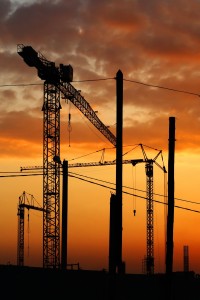Tower Crane Safety: How HoistCam Can Help
There are currently hundreds of thousands of tower cranes currently operating across the globe, and more are being erected every day, according to Crane Operator. While tower and mobile cranes can be rented or purchased, depending on company need, they can both be very dangerous if precautions aren’t taken and training isn’t provided. Mobile cranes can be moved about on the job site in order to move cargo from one place to the next, while tower cranes are stable. There are several more differences with tower cranes.
According to the report, “Tower cranes can be placed closer together, have a radius of about 140 square meters, and can lift steel, concrete, and a variable range of building material. Contractors can save 50 percent on the cost of material handling by using self-erecting tower cranes and onsite labor, saving thousands. Due to the flexibility of tower cranes, they are becoming more commercialized and are high in demand.” However, operating this type of crane can be very demanding, and require total concentration and focus for the crane operator.
The tower crane is often the highest point on any job site. The bottom of the tower crane is usually bolted down to a large concrete pad, with a base that is connected to the mast. The gears and motors are placed at the top of the mast, allowing the crane to be rotated as needed to move cargo. It is easy to see why such a huge piece of machinery could be dangerous to use. The operator is often hundreds of feet away from his cargo, and must depend completely on communication with his riggers via hand signals and radios.
In situations such as this, it can be very easy for the crane operator to miss spotting a dangerous situation. Even if the riggers notify the operator of an impending accident, the communication may be too slow to stop it in situations that occur suddenly. When two or more cranes are present on a job site, for example, one could easily swing unexpectedly into the path of another one. Without immediate notification, the crane operator may not be able to stop a catastrophe.
That’s where HoistCam’s cameras on cranes can help. By placing a camera anywhere on the crane, we can give a new set of eyes to the crane operator. The camera sends video feed back to a monitor inside of the crane cab, which the operator can see with just a glance. The camera can be placed anywhere that the operator needs to see…meaning he would be able to immediately see if something were to suddenly move into his path. Instead of having to glance down hundreds of feet below to the riggers and read their hand signals, or listen to radio communications and ten react, he can see the danger for himself, and immediately react.


